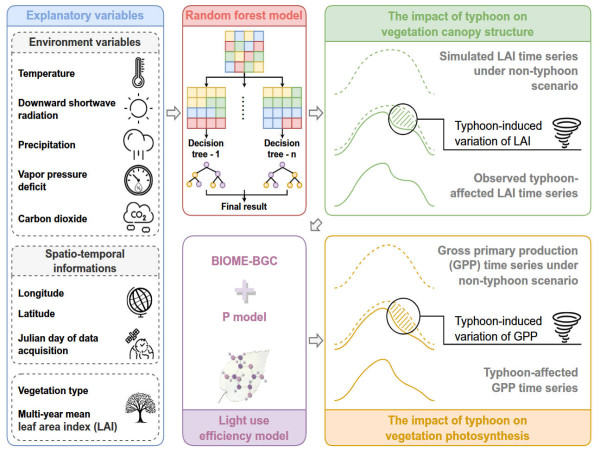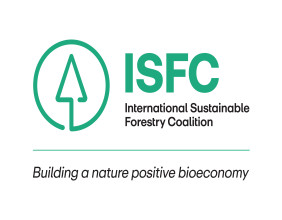GA, UNITED STATES, March 1, 2025 /EINPresswire.com/ -- A new study introduces an innovative framework that harnesses satellite observations and machine learning models to quantify the direct impacts of typhoons on vegetation canopy structure and photosynthesis. The research assesses both immediate damage and long-term recovery, providing crucial insights for coastal ecosystem management and disaster risk assessment amid climate change.
Coastal vegetation ecosystems, crucial for global carbon sequestration and biodiversity, face increasing typhoon threats as climate change alters their frequency, intensity, and landward movement. However, traditional methods for assessing typhoon damage—typically based on pre- and post-event satellite comparisons—often overlook natural plant life cycles and interannual environmental changes, leading to inaccurate assessments of both damage and recovery. This highlights the urgent need for more precise and comprehensive approaches to understanding the full scope of typhoon impacts on vegetation.
Published (DOI: 10.34133/remotesensing.0430) in Journal of Remote Sensing on February 6, 2025, the study by researchers from Peking University Shenzhen Graduate School and Boston University introduces a pioneering framework that combines satellite data with random forest models to accurately assess the immediate and long-term effects of typhoons on vegetation canopy structure and photosynthetic activity. By addressing the limitations of traditional methods, this approach provides a more reliable measure of typhoon-induced vegetation damage and recovery from both structural and functional perspectives.
Using satellite-observed leaf area index (LAI) and environmental data, researchers developed random forest models to simulate vegetation conditions in the absence of typhoons, providing a benchmark to assess the true extent of damage. By comparing simulated LAI data with observed values, the researchers assessed typhoon-induced canopy loss and tracked recovery over time. The study also integrates light use efficiency (LUE) models to assess the impact of typhoons on photosynthesis, offering deeper insights into the physiological consequences of typhoons on vegetation. Applying this framework to three super typhoons—Nida, Hato, and Mangkhut—that traversed the Greater Bay Area, researchers quantified the extent of vegetation damage. Typhoon Nida affected 76.58% of vegetated areas, Hato impacted 61.25%, and Mangkhut caused the largest loss at 89.67%. Structural damage led to a sustained decline in carbon uptake, with direct cumulative photosynthetic losses of 0.36 Tg C for Nida, 0.22 Tg C for Hato, and 0.50 Tg C for Mangkhut. The study also demonstrated the advantages of the new framework over traditional methods. For instance, conventional approaches mischaracterized Typhoon Hato's effects, suggesting positive impacts on vegetation, while the new framework more effectively identified substantial damage.
"This study offers a new approach to assessing typhoon impacts on vegetation," said the lead researcher. “By disentangling the direct effects of typhoons from plant's internal rhythm and environmental variations, we can better understand the true extent of damage and recovery, which is critical for effective ecosystem management and disaster risk reduction.”
This framework evaluates both the structural and functional dimensions of typhoon-induced vegetation damage and long-term recovery, providing more comprehensive and multidimensional decision support for vegetation management and post-disaster restoration. Its broad applicability enables further exploration of the quantitative relationships between typhoons, vegetation damage, and recovery, while also shedding light on the underlying mechanisms. This provides valuable scientific evidence for future post-disaster management strategies.
DOI
10.34133/remotesensing.0430
Original Source URL
https://doi.org/10.34133/remotesensing.0430
Funding information
This work was supported by the National Natural Science Foundation of China (42271104) and the Shenzhen Science and Technology Program (JCYJ20220531093201004 and KQTD20221101093604016).
Lucy Wang
BioDesign Research
email us here
Legal Disclaimer:
EIN Presswire provides this news content "as is" without warranty of any kind. We do not accept any responsibility or liability for the accuracy, content, images, videos, licenses, completeness, legality, or reliability of the information contained in this article. If you have any complaints or copyright issues related to this article, kindly contact the author above.
![]()






